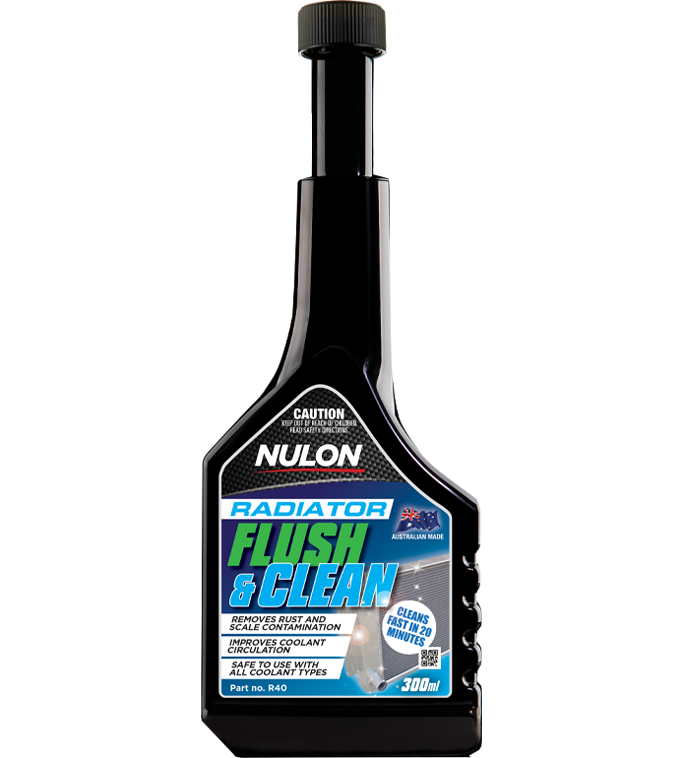Radiator Flush and Clean (R40)
Nulon Radiator Flush & Clean is a non-acidic radiator and cooling system cleaner that effectively cleans in one simple 20-minute operation. Many similar products have to be left in the cooling system for several days, which creates the risk of the user either forgetting or extending the drain and flush time for reasons of convenience. The results can be detrimental and cause expensive, long-term damage to the cooling system and associated components. Nulon Radiator Flush and Clean overcomes this potential risk as the whole cleaning process is completed in one simple operation.
Recommended Uses
- Use Radiator Flush and Clean as a complete cooling system flush to remove insulating built-up sludge and residue before changing the coolant in any cooling system. This procedure will ensure optimum heat transfer and efficiency of the entire cooling system.
- Whenever draining a cooling system, or changing brands of coolant, cleaning the system with Radiator Flush and Clean is always recommended.
- Use Radiator Flush and Clean before removing a radiator from a vehicle for reconditioning. Clean the entire system with Radiator Flush and Clean so that when the radiator is reinstalled, the core will not be contaminated with scale and residue from the rest of the system.
Pack sizes
- Cleans fast in 20 minutes
- Reduces overheating
- Safe to use with all coolant types
- No pre-mixing
- Neutralises harmful acids
- Reduces mineral scale and sludge
Note: Exercise caution when removing radiator caps. Release pressure slowly to avoid scalding.
- Turn on the heater and add required amount of R40 to a warm radiator.
- Run the engine for 20 minutes minimum (no longer than 1 hour). Stop the engine and allow it to cool.
- Drain the system by removing the bottom radiator hose or opening the drain cock. Thoroughly flush and rinse out all old coolant. Replace the hose or close the drain cock.
- Add Nulon R45 Ultra Cool corrosion inhibitor and clean, soft or demineralised water, or
- Where specified, use anti-freeze/anti-boil coolant (such as Nulon Long Life Anti-Freeze/Anti-Boil).
- Start the engine, check for leaks and top up as necessary.
Application Rates
- All cars and light commercials - add 1 bottle
- For trucks, tractors and large engines - add 1 bottle for every 6 litres (quarts) of cooling system capacity.
Warning
Never mix brands of radiator products and never under-treat with radiator products.
First Aid Directions
For advice contact the Poisons Information Centre (Ph. Australia 131 126; New Zealand 0800 764 766) or a doctor (at once). If swallowed, do NOT induce vomiting. If in eyes, hold eyelids apart and flush the eye continuously with running water. Continue flushing until advised to stop by the Poisons Information Centre or a doctor or for at least 15 minutes. If skin or hair contact occurs, remove contaminated clothing and flush skin and hair with running water. Continue flushing with water until advised to stop by the Poisons Information Centre or a doctor. Not to be used as a food container.


